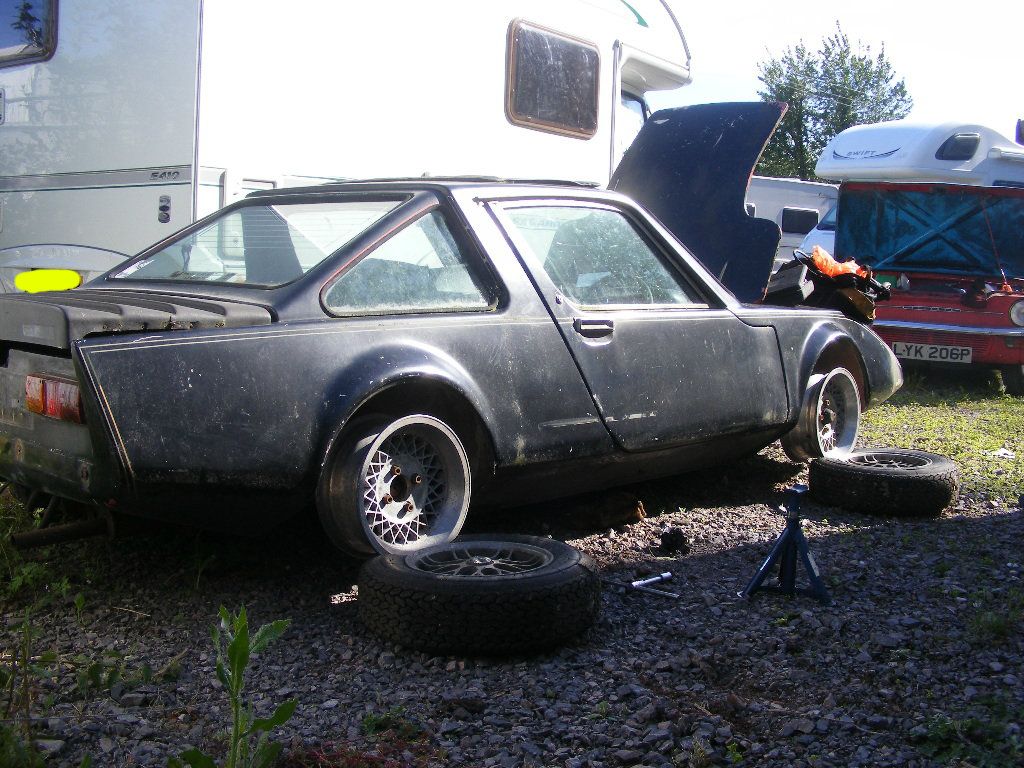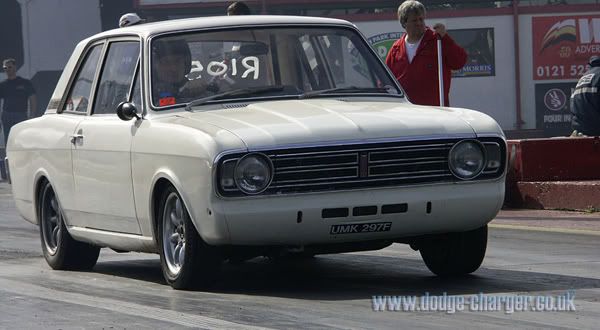Seth
South East
MorrisOxford TriumphMirald HillmanMinx BorgwardIsabellaCombi
Posts: 15,543
|
|
Jun 10, 2012 19:12:20 GMT
|
|
What's anyone's views on running in a re-built engine. Its not been bored or had a crank grind but has new shells, honed bores and new rings. Combination of cam/followers/pushrods/rockers that haven't all been together before either.
The car's original handbook says not to exceed 10,20,30 and 40 mph in each respective gear for the first 500 miles and I can tell you that's not going to happen! That increases to 15, 27, 45 and 60 mph for the second 500 miles. On my first forays out I've limited myself to part throttle and 3000rpm.
The two factory manuals I have contradict each other as to when to re-tighten the head bolts. One says warm the engine up, let it cool then re-torque. The other says do it after the first 500 miles running in.
The car would have had a first service at 500 miles which I imagine involved changing oil and filter so I should leave these until then or do them sooner?
All opinions welcome!
|
| |

Follow your dreams or you might as well be a vegetable. |
|
|
|
bl1300
Posted a lot
  
Posts: 1,678
|
|
Jun 10, 2012 19:32:06 GMT
|
|
I too am interested in what people have to say on this as my Triumph will soon be in the same boat.
Personally I think you need to use all the revs but DO NOT labour the engine.
|
| |
Current fleet.
1967 DAF 44
1974 VW Beetle 1303s
1975 Triumph Spitfire MkIV
1988 VW LT45 Beavertail
1998 Volvo V70 2.5
1959 Fordson Dexta
|
|
|
|
|
Jun 10, 2012 20:08:12 GMT
|
Disclaimer: My advice is based on that from the (now sadly defunct) Puma Racing website - it makes perfect sense to me, but don't blame me if it all goes wrong.  During running in, the rings bed in and the bearing (and piston-bore) clearances open up. While the clearances are tight, more heat than normal is generated. So, we want to keep surface speeds (rpm) down, and the engine load down - both will increase the amount of heat generated by friction. However, treating the engine too gently won't allow the rings to bed in. So, for what it's worth, my advice (assuming that you're not running in a camshaft as well*) is: -Early on (preferably first time out), do 10 repetitions of a 10-second full-throttle acceleration run (ideally somewhere around peak torque in a higher gear - the sort of time you'd expect to hea pinking - to get the cylinder pressures up). Separate the repetitions by at least 30 seconds to allow any heat to dissipate. -Drive it gently to start with: use light throttle and keep the revs down a bit - but most importantly keep the revs and load varying. This will help to avoid excessive heat or poor bedding in. Build up the revs and load over ~100 miles but remember: variation. Change the oil at 100 miles - everythign should be fairly well bedded in by now, so there'll be plenty of metal floating about in the oil. -After that, drive it fairly normally, but try to avoid motorways for 500 miles, and high-speed runs for another 500. Changing the oil at 500 miles would be a good plan. After than change on your normal schedule. As for the heads, re-torquing at 500 miles is the norm, but with an ally head it might be worth doing a re-torque now as well. With Imps (admittedly known for head gasket issues), re-torquing after the first heat cycle and again after 500 miles is the normal recommendation. This is the procedure I followed with the Imp, and it has never used oil. It only lasted 10,000 miles before the big ends started rattling, but I think that was more to do with the wear on it when it went in and several instances where I turned it off in traffic and pulled away before the oil was circulating properly - there was no sign at all of overheating on the bearing shells, so I don't think the run-in procedure was to blame. Hope this helps you decide on a running-in procedure that's right for you. ;D *Camshaft bed-in is 20-25 minutes of 2000-2500rpm running with no load at first start - the sort of revs where noisy (solid) tappets go quiet - to minimise the load on the cam lobes. Cam lube on assembly is essential. Change the oil afterwards. |
| |
Last Edit: Jun 10, 2012 20:08:30 GMT by jrevillug
|
|
|
|
|
Jun 10, 2012 20:23:17 GMT
|
|
I think there are two parts to this:
Part 1:
The cam and followers need to be run-in. This is done by holding the engine at approx 2000 rpm directly from first start for approx 15 - 20 minutes. The cam lobes are loaded less than they would be at idle speed and better lubricated.
Part 2:
The piston rings and bores. This takes longer. I would say that this involves using the engine fairly normally, keeping it in the 1500 - 3000 rpm range initially (first 150 miles or so) and then upping the revs gradually as the mileage grows. Don't cane it, don't labour it, but do use a bit of throttle from time to time as the combustion pressure forces the rings against the bores and helps the running in process. Try not to sit at constant speed/throttle but vary the speed and load. The major part of the process will be done by 500 miles (first oil change I'd suggest) but I'd avoid thrashing it until you've done at least 1000. You'll likely notice it loosening up as you go.
Bearings should never be making metal to metal contact and don't really need any running in at all.
The used to be a great article on this by Dave Baker of Puma Racing Engines on line, but I can't seem to find any of his stuff now. Pity, he wrote excellent articles.
Cheers
Nick
|
| |
1967 Triumph Vitesse convertible (old friend)
1996 Audi A6 2.5 TDI Avant (still durability testing)
1972 GT6 Mk3 (Restored after loong rest & getting the hang of being a car again)
|
|
mk2cossie
Club Retro Rides Member
Posts: 3,063  Club RR Member Number: 77
Club RR Member Number: 77
|
Running in. Please Pass.mk2cossie
@mk2cossie
Club Retro Rides Member 77
|
Jun 10, 2012 20:23:29 GMT
|
i was told to use 3/4 max rpm and up to half throttle when running in my engine. different people have different thoughts on it. race engines get rebuilt and remapped straight away more or less, and survive. the theory being that if its gonna break, it'll do it then instead of out on its first outing  try and drive it normally and keep away from low rpm/big throttle openings to keep the engine from labouring too hard, oil change and retorque heads at 500miles if neccessary and go from there seem to remember doing oil and filter again on mine after 1500miles as well  |
| |
|
|
|
|
|
|
|
|
^^^ modern and race engines are different to older stuff, as stated before don't rev its tits off and don't let it labour unneccesarily, drop the oil and filter at 500 miles and gradually bring up to normal usage as you get towards 1000 miles (poss oil change again if you want to)
|
| |
|
|
jasonj
Part of things
 
Posts: 220
|
|
Jun 11, 2012 10:01:12 GMT
|
|
|
| |
Team Supercharged Opel Ascona 400.
294bhp - 235 lb/ft
|
|
Copey
Posted a lot
  
Posts: 2,845
|
|
Jun 11, 2012 10:23:45 GMT
|
whenever i have run in an engine i have stuck to simple rules and always been fine keep revs below 3000, don't floor it and keep the speed below 60 for 500 miles and then just drive the car "normally" i.e not thrashing it for another 2-300, oil change and then away you go  as mentioned mineral oil for running in at least, running in oil would be better though |
| |
1990 Ford Sierra Sapphire GLSi with 2.0 Zetec
1985 Ford Capri 3.0 (was a 2.0 Laser originally)
|
|
MrSpeedy
East Midlands
www.vintagediesels.co.uk
Posts: 4,791 
|
|
Jun 11, 2012 16:35:34 GMT
|
whenever I have run in an engine I have stuck to simple rules and always been fine keep revs below 3000, don't floor it and keep the speed below 60 for 500 miles and then just drive the car "normally" I.e not thrashing it for another 2-300, oil change and then away you go  as mentioned mineral oil for running in at least, running in oil would be better though This is pretty much exactly what I've done with the new Vitesse engine and she's loosening up nicely. There was indeed a fair amount of metallic 'colouring' in the first oil change, but subsequently there has been hardly any  |
| |
|
|
v8ian
Posted a lot
  
Posts: 3,832
Member is Online
|
|
Jun 11, 2012 16:36:11 GMT
|
|
I'm guessing its not a modern engine, do not run it in on any form of synthetic, you will never bed the rings in, because modern engines generally have coated bores and very thin rings they do not need to bed the rings in, the large width of old style rings work with the superior lubrication properties of syn which does not allow the rings to bed in correctly, Use traditional mineral oil, much safer, after about 3-4k you can change to syn if you wish as the rings are bedded in by then,
|
| |
Atmo V8 Power . No slicks , No gas + No bits missing . Doing it in style.
Austin A35van, very different------- but still doing it in style, going to be a funmoble
|
|
Seth
South East
MorrisOxford TriumphMirald HillmanMinx BorgwardIsabellaCombi
Posts: 15,543
|
|
Jun 11, 2012 19:32:44 GMT
|
Thanks for the input. I'm never likely to use synthetic (or even semi synth) in and old engine  I've done about 20 miles in it, keeping the revs below about 3000, varying speeds, using the gears etc. while checking for leaks and tweaking the carbs. I think I'll re-torque the head now and then again after a few hundred miles as I can't see that doing it twice would do any harm. Will change the oil and filter at the same time as that second re-torquing. Need to try and like some miles on in the next couple of weeks!  |
| |

Follow your dreams or you might as well be a vegetable. |
|
















